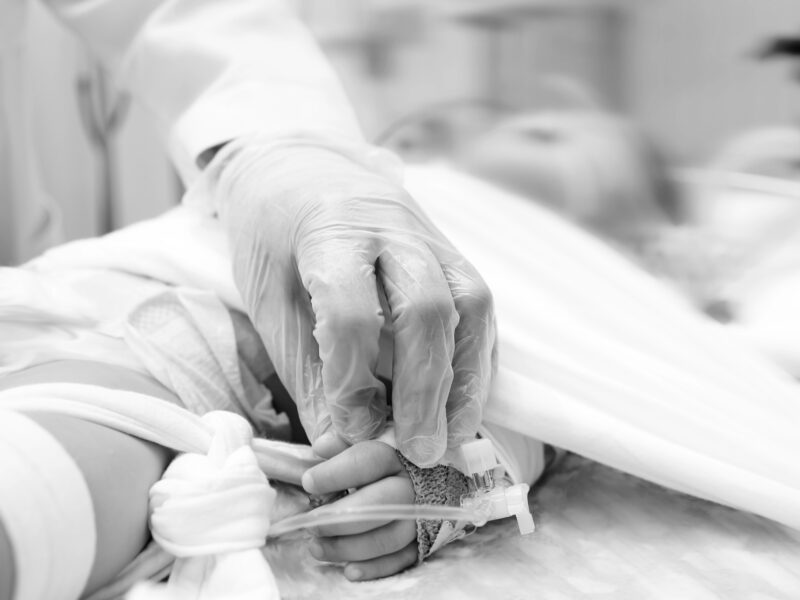Targeting Therapies for Children With Multiple Organ Dysfunction
Targeting Therapies for Children With Multiple Organ Dysfunction https://pediatricsnationwide.org/wp-content/uploads/2019/04/Targeting-Therapies_header-for-web-1024x575.jpg 1024 575 Kevin Mayhood Kevin Mayhood https://secure.gravatar.com/avatar/bd57a8b155725b653da0c499ae1bf402?s=96&d=mm&r=g- April 19, 2019
- Kevin Mayhood

Anakinra, an interleukin-1 receptor antagonist, may be effective for selective children with MODS who meet diagnostic criteria for hemophagocytic lymphohistiocytosis (HLH).
Multiple organ dysfunction syndrome (MODS) involves altered function of two or more organ systems and is among the most severe forms of critical illness, with mortality rates up to 50 percent in children. MODS can result from a variety of acute conditions, including sepsis, trauma, cancer, or status-post cardiopulmonary bypass. Causes for MODS are not well understood, but are likely multifactorial; and current therapies for MODS are largely supportive, with few targeted therapeutic options.
A subset of children with MODS also meet diagnostic criteria for HLH, a life-threatening condition caused by natural killer cell dysfunction, which leads to unfettered systemic inflammation. Primary HLH is caused by mutations in genes responsible for NK cell function, is treated with highly immunosuppressive chemotherapy (such as etoposide), and often requires bone marrow transplant for cure. Some patients without gene mutations can acquire an HLH-like illness in the setting of an acute inflammatory condition, such as infection. This is often referred to as secondary HLH or hyperferritinemic MODS. The optimum therapy for these children is unclear.
Previously published survival rates for critically ill children meeting HLH diagnostic criteria and treated with standard HLH therapy are about 50 percent.
In a recent small retrospective study, children suffering from MODS and meeting the criteria for HLH were treated differently: with the drug anakinra, which is often used to treat macrophage activation syndrome (MAS), a complication of rheumatic disease with similar pathophysiology. Their survival rate was 89 percent.
“Many of the children had viral and infectious triggers,” says Celia Ligorski, DO, a resident at Nationwide Children’s Hospital and study co-leader. “Immunosuppressive medications would hinder their ability to fight infection. Anakinra may be a more targeted therapy.”
Anakinra is a manmade version of the chemical recombinant interleukin-1 receptor antagonist the body produces. The drug blocks the IL1 receptor and thereby reduces the cytokine storm that leads to tissue damage and organ failure.
By the end of treatment, the majority of HLH criteria were resolved in the children, Dr. Ligorski says. She presented the study’s findings at the Society of Critical Care Medicine’s Annual Congress in February.
Despite indications, “we’re not sure these children have HLH,” says Jennifer Muszynski, MD, a critical care physician and principal investigator in the Center for Clinical and Translational Research at Nationwide Children’s. She was also the study co-leader.
To study outcomes, Drs. Ligorski and Muszynski and their colleagues collected and analyzed the data of nine children who were treated with anakinra for hyperferritinemic MODS, from 2013 through 2017.
The average child’s age was 11. Eight children had acute bacterial or viral infection or both; all had two or more organ dysfunctions and all met five or more criteria for HLH. Bone marrow biopsies on seven children indicated six had hemophagocytosis.
The children received anakinra in larger doses than typically used by rheumatologists, Dr. Muszynski says.
The mean dose delivered in the first week was 9.4 mg/kg/day. All patients also received steroids, five underwent therapeutic plasma exchange, three required extracorporeal membrane oxygenation support and five required renal replacement therapy.
The average Pediatric Logistic Organ Dysfunction score for the group improved from a 7 on the day before beginning treatment to a 4 after three days on anakinra to a 3 after a week of treatment. The scores suggest organ function improvements.
Eight out of nine children survived to hospital discharge. One child with no apparent underlying immune dysfunction had immunoparalysis, a severe form of critical illness-induced immune suppression, in parallel with the child’s pro-inflammatory response, Dr. Ligorski says.
Testing after treatment showed the immunoparalysis was completely corrected, she says. “The data suggests that treatment with anakinra may preserve systemic immune function and allow immunologic recovery and reset the inflammatory system.”
The study replicates findings from a retrospective study of eight children with presumed secondary HLH at DeVos Children’s Hospital, published in 2014. A post-hoc analysis of a 2016 multi-site study on adults with sepsis and features of MAS also concluded anakinra treatment may provide a survival benefit.
Drs. Muszynski and Ligorski say a larger, prospective multi-site study, including evaluation of immune function and anti-inflammatory response, is needed.
References:
- Rajasekaran s, Kruse K, Kovey K, Davis AT, Hassan NE, Ndika AN, Zuiderveen S, Birmingham J. Therapeutic role of anakinra, and interleukin-1 receptor antagonist, in the management of secondary hemophagocytic lymphohistocytosis/sepsis/multiple organ dysfunction/macrophage activating syndrome in critically ill children. Pediatric Critical Care Medicine. 2014 Jun;15(5):401-8.
- Shakoory B, Carcillo JA, Chatham WW, Amdur RL, Zhao H, Dinarello CA, Cron RQ. Opal SM. Interleuin-1 receptor blockade is associated with reduced mortality in sepsis patients with features of macrophage activation syndrome: reanalysis of a prior phase III trial. Critical Care Medicine. 2016 Feb;44(2):275-81.
- Carcillo J, Berg R, Wessel D, Pollack M, Meert K, Hall M, Newth C, Lin J, Doctor A, Shanley T, Cornell T, Harrison R, Zuppa A, Reeder R, Banks R, Kellum J, Holubkov R, Notterman D, Dean JM, Tamburro R. Three pediatric sepsis-induced multiple organ failure inflammation phenotypes: a multicenter study. Critical Care Medicine. 2019 Jan;47(1):42.
Image credit: Nationwide Children’s
About the author
-
Kevin Mayhoodhttps://pediatricsnationwide.org/author/kevin-mayhood/
-
Kevin Mayhoodhttps://pediatricsnationwide.org/author/kevin-mayhood/April 25, 2015
-
Kevin Mayhoodhttps://pediatricsnationwide.org/author/kevin-mayhood/April 25, 2015
-
Kevin Mayhoodhttps://pediatricsnationwide.org/author/kevin-mayhood/April 25, 2015
- Post Tags:
- Critical Care
- Posted In:
- Features







